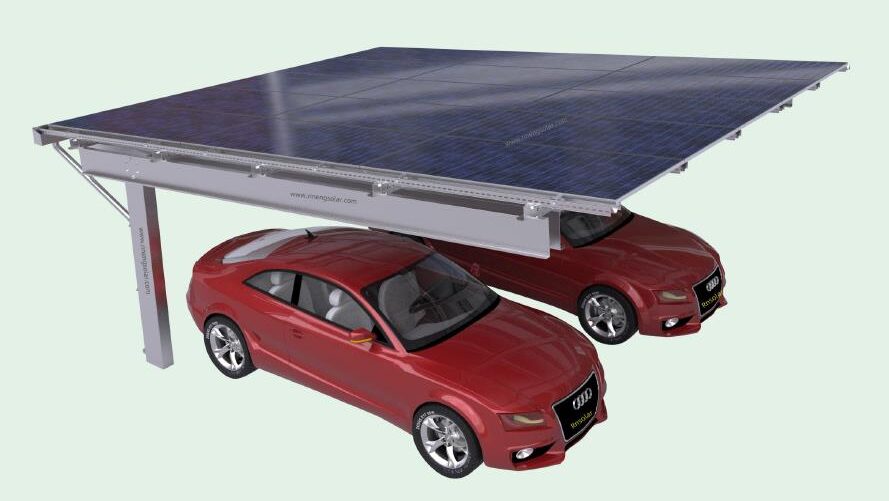Critical Considerations for Solar Panel Deployment in Smart Environmental Energy Systems
Environmental Compatibility and Sustainable Material Selection
The integration of solar panels into smart environmental systems demands careful evaluation of ecological impacts. Traditional silicon-based panels, while efficient, require energy-intensive manufacturing processes that generate greenhouse gases. Emerging thin-film alternatives, such as CIGS (copper indium gallium selenide), reduce material waste by 30% and lower carbon footprints during production. For instance, a research facility in Sweden adopted CIGS panels for its rooftop array, cutting embodied carbon emissions by 25% compared to conventional silicon modules.
Recyclability is equally vital. End-of-life panels containing toxic lead or cadmium pose soil and water contamination risks if improperly disposed. Systems should prioritize panels with ISO 14021-certified recyclable components, like aluminum frames and glass covers, which constitute 80% of a panel’s mass. A pilot project in the Netherlands demonstrated that 95% of panel materials could be recovered using advanced pyrolysis techniques, diverting 12 tons of waste from landfills annually.
Local biodiversity must also influence design choices. Ground-mounted arrays in natural habitats should use elevated racks to preserve soil permeability and plant growth. A wildlife reserve in Costa Rica installed panels 2 meters above ground, allowing grass species to thrive underneath and supporting a 20% increase in pollinator populations compared to shaded areas.
Adaptive Energy Management for Grid Stability and Waste Reduction
Smart environmental systems rely on real-time data to balance supply and demand, minimizing reliance on fossil-fuel backups. Machine learning algorithms analyze weather patterns, historical consumption, and panel degradation rates to predict energy yields with 98% accuracy. A university in Australia integrated such a system, reducing diesel generator usage by 60% during cloudy periods by pre-charging batteries when solar output is high.
Dynamic load shifting further enhances efficiency. Non-critical appliances like water heaters or EV chargers can activate during peak production hours, aligning consumption with generation. A residential community in Germany programmed its smart meters to heat water only when irradiance exceeds 800 W/m², cutting grid electricity use by 45% without compromising comfort.
Overgeneration risks demand scalable storage solutions. Lithium-ion batteries with 95% round-trip efficiency store excess energy for nighttime use, but their 10-year lifespan requires replacement cycles that generate e-waste. Flow batteries, using non-toxic electrolyte solutions, offer 20-year durability and 80% recyclability at end-of-life. A town in Canada replaced its lithium systems with vanadium flow batteries, reducing long-term waste by 70%.
Climate-Resilient Design to Withstand Extreme Weather Events
Rising global temperatures and erratic weather patterns necessitate robust panel infrastructure. High-wind zones demand mounting systems rated for 200 km/h gusts, with aerodynamic frames that reduce lift forces by 40%. After Hurricane Maria in 2017, a Puerto Rican school rebuilt its array using hurricane-rated clamps, surviving subsequent Category 5 storms without structural damage.
Hail resistance is critical in regions prone to severe thunderstorms. Tempered glass covers with 4mm thickness and anti-reflective coatings withstand 50mm hailstones at 80 km/h, as demonstrated by testing facilities in Colorado. A school district in Texas adopted these standards after hail damaged 30% of its conventional panels, incurring $50,000 in repairs.
Flood-prone areas require elevated inverters and waterproof connectors to prevent short circuits. IP68-rated components, which withstand submersion in 1.5 meters of water for 30 minutes, are essential for coastal installations. After Typhoon Haiyan in 2013, a Philippine community relocated its inverters to 3-meter-high platforms, ensuring uninterrupted operation during floods.
Circular Economy Practices for Long-Term Environmental Benefits
Extending panel lifespans through proactive maintenance reduces resource extraction demands. Self-cleaning coatings using hydrophobic nanostructures repel dust and bird droppings, maintaining 98% light transmission in desert climates. A school in Dubai reported a 30% increase in annual output after applying such coatings, delaying replacement needs by 5 years.
Refurbishment programs can restore degraded panels to 80% of original capacity. Techniques like laser doping repair microcracks in silicon cells, while re-encapsulation with ethylene-vinyl acetate (EVA) extends module durability. A recycling plant in France refurbishes 10,000 panels annually, selling them at 60% of new panel costs to low-income communities.
Community-based sharing models amplify environmental impact. Solar cooperatives in Denmark allow members to invest in shared arrays, with energy credits proportional to their contributions. This approach reduced individual carbon footprints by 2 tons/year per household while democratizing access to clean energy.
By prioritizing sustainable materials, adaptive energy management, climate resilience, and circular practices, solar panels can serve as the backbone of smart environmental systems that prioritize planetary health alongside energy independence.


